Shimano Derailleur Hanger Patent Opens Up Many Possibilities with Another New Standard
Shimano has filed a patent for a new derailleur hanger design that, quite frankly, has us scratching our heads. Along with a UDH-style solution for mounting a hanger to the dropout, this so-called “bracket apparatus” has a second forward mounting point that looks to mount a battery, or some other electronic device, from the inboard face of the chainstay.
Our first thoughts? Oh, Shimano is bringing the derailleur’s battery outside, but then housing it on the frame instead. Fair enough, right? It seems reasonable to bring it out for more accessibility and less hassle with internal cable routing, but relatively speaking, having it out of harm’s way would be good too.
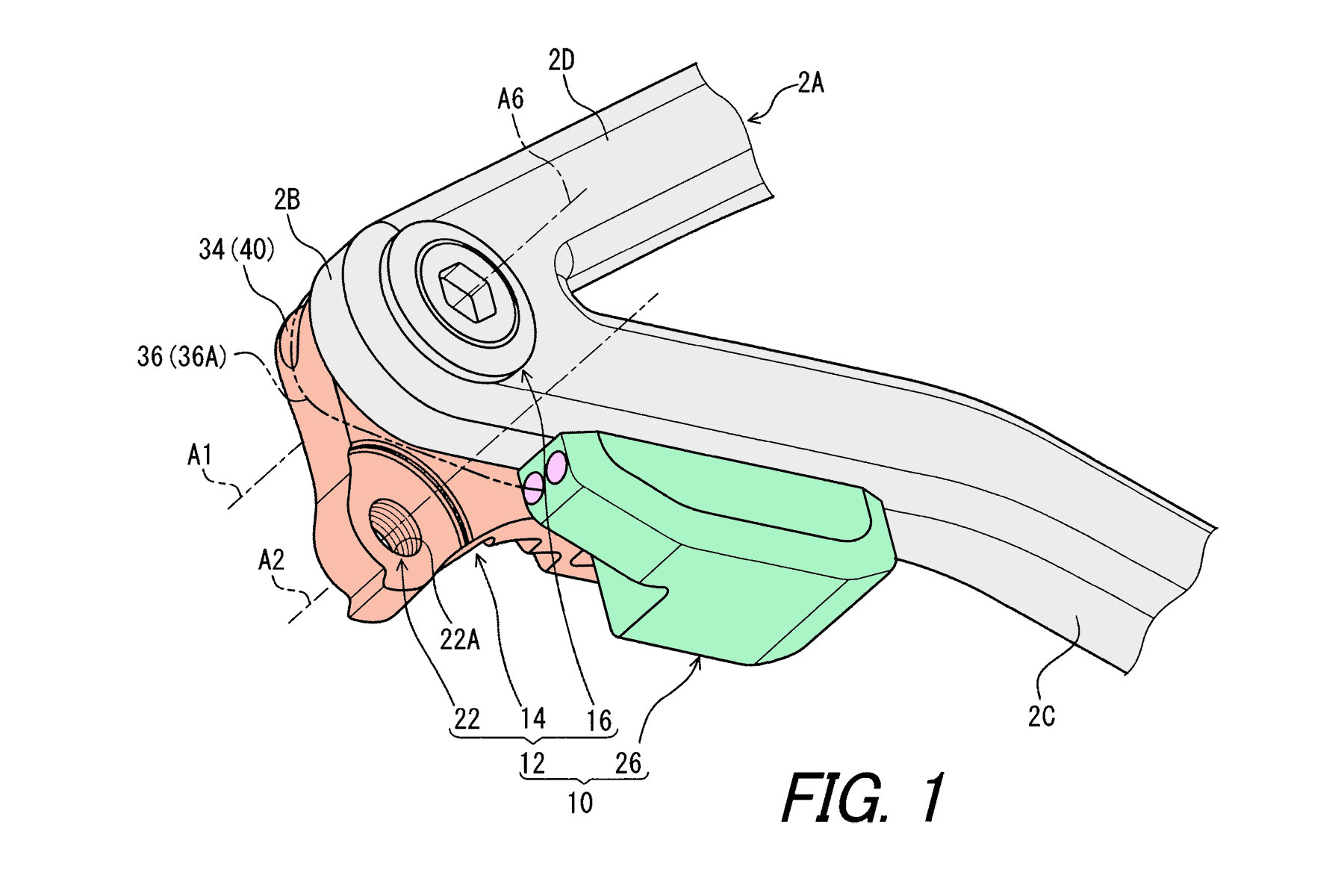
Looking more closely at the fresh patent (US 20230166813 A1), we believe this new arrangement could form the basis for execution of more exciting technology; a self-charging solution, or, if we really think outside the box, it could even be the infrastructure necessary for the execution of Fox’s Suspension Enhancing Hub and Derailleur Assembly.
With potential involvement of a proposed hub dynamo, an integrated cassette cleaner and chain stabilizer, this bracket device, thanks to its secondary mounting device, brings with it some interesting uses beyond the simple mounting of a rear derailleur.
Shimano Bracket Apparatus for Derailleur Mounting
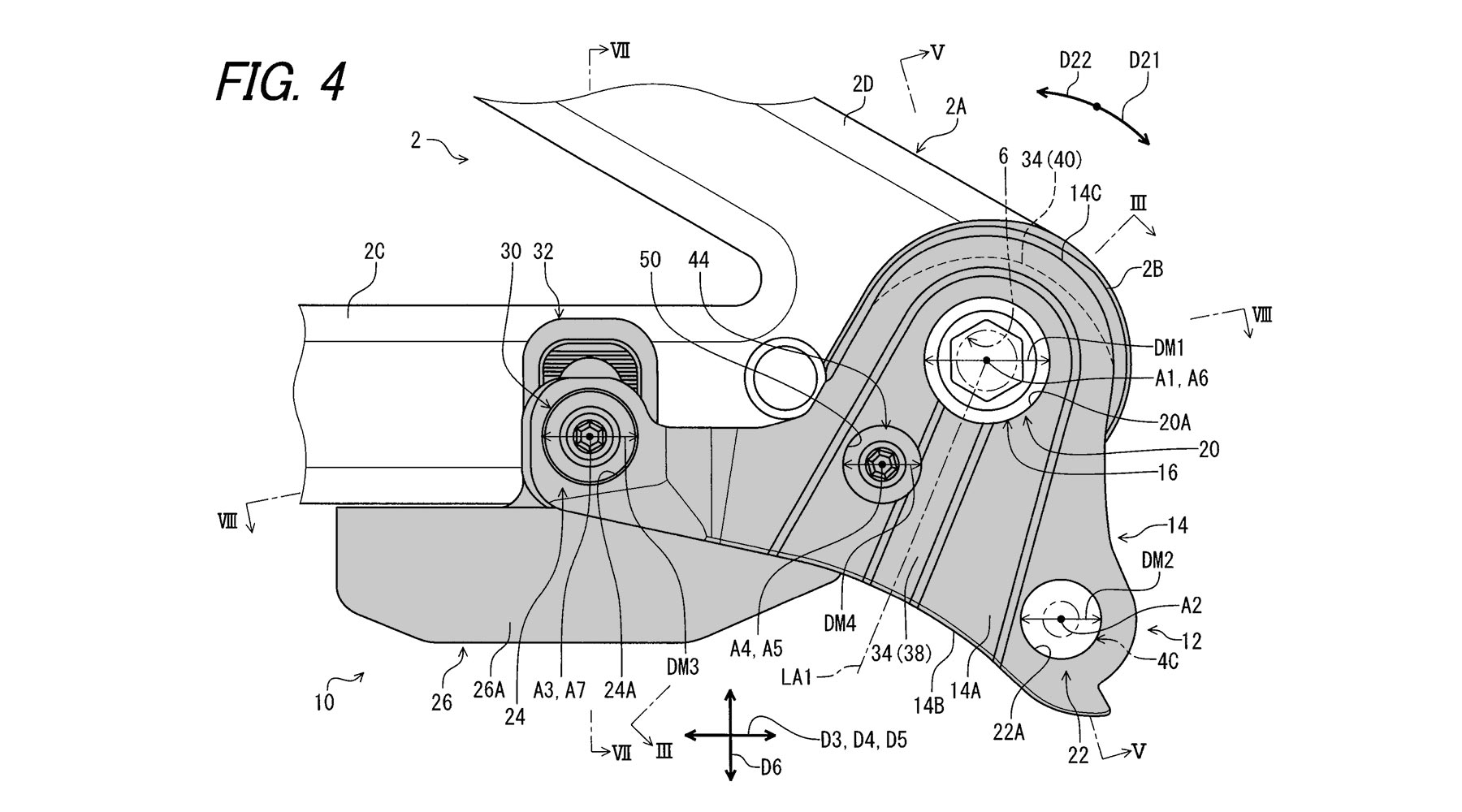
Before we allow our minds to run wild, let’s focus on the structure of the proposed derailleur hanger from Shimano. Much like the SRAM UDH design, the Shimano “Bracket Apparatus” ties in the thru-axle mounting of the rear wheel with the mounting of the derailleur hanger. It still primarily bolts to the bike at the rear axle, with a traditional hanger retention bolt into the frame, too (44). But it looks like it will need a new nub on the frame on the inside of the chainstay to prevent unwanted hanger rotation. Shimano’s patent seems to avoid expanding on that additional requirement of this new ‘standard’.
There’s nothing terribly unusual here, except that the inboard face of the hanger sees a channel (34/38) running down from the dropout for the routing of a cable that presumably exits the hub via its end-cap. More on that later.
More obviously unique to this derailleur hanger is the extra arm, if you will, that extends forward along the inboard face of the chainstay to a secondary mounting point. Here, the arm meets a component bracket (32) to which what is likely a battery (26), and/or some kind of sensor or other electronic device, is mounted, and positioned on the underside of the stay.
Certainly, it looks as though this Shimano Bracket Apparatus serves a broader purpose than the mounting of a rear derailleur, which it does so in the usual fashion via threads on its lowermost portion (22).
One Possibility: Part of a Self-Charging Solution?
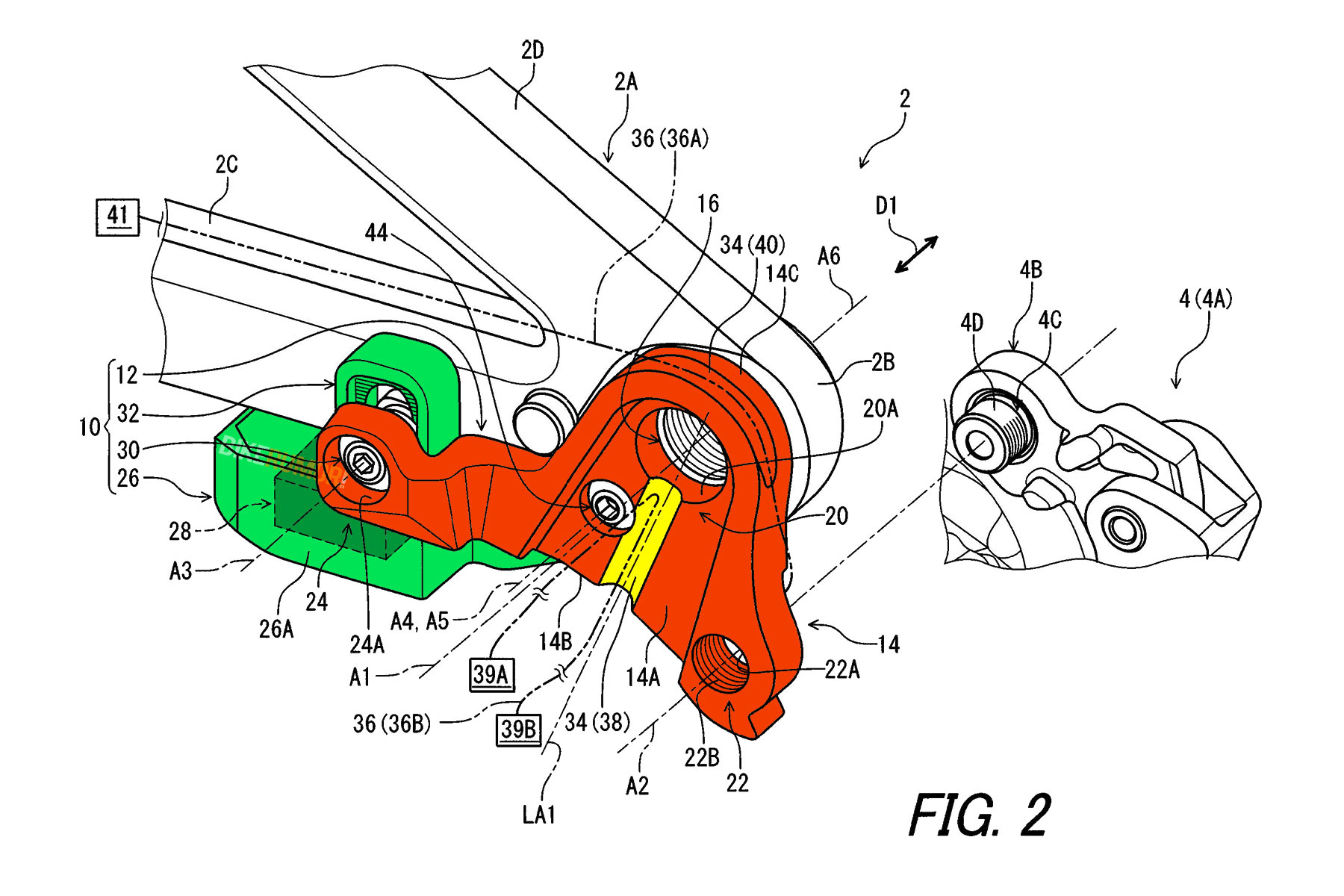
So, why is Shimano developing this new derailleur hanger standard?
We think it could be part of a self-charging solution in which an electronic derailleur is powered directly by a rear hub dynamo.
In conjunction with this invention, Shimano is also working on multiple versions of a rear hub dynamo, wherein a generator located inside the rear hub takes the kinetic energy from rotation of the rear wheel and converts it into an electrical current. You can learn about the specifics of that in US Patent 20230037945 A1.
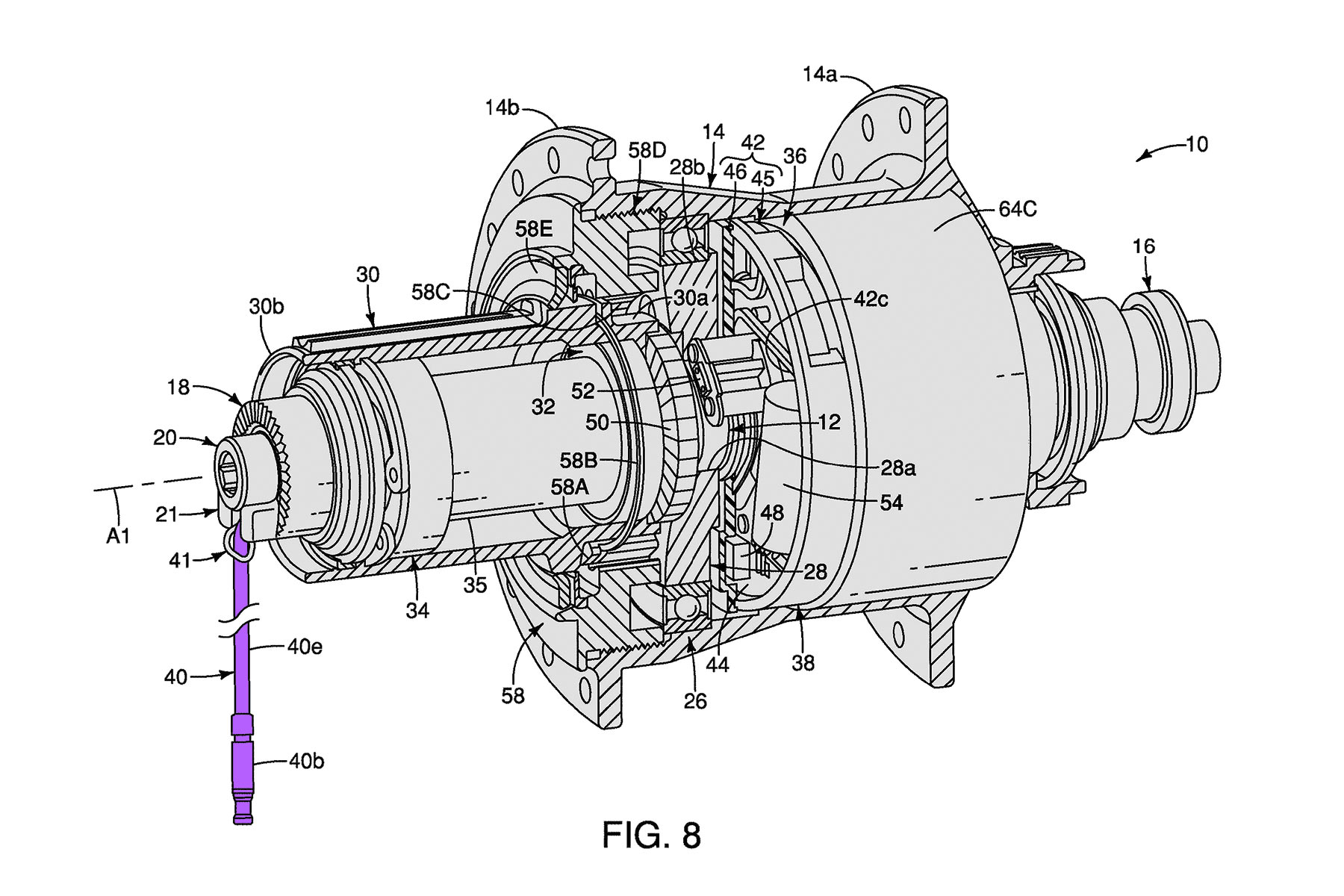
Granted, the rear hub dynamo shown runs a quick-release skewer, but Shimano does offer thru-axle solutions on its current (front) dynamo hubs. Furthermore, the patent document in question also shows the rear hub dynamo in use on a full suspension bike, which would invariably run a thru-axle dropout in swingarm these days. The patent specifically mentions usage of the energy generated by the dynamo for powering an electronic rear derailleur, with energy being transferred along a wire (40) exiting the hub at the drive-side end-cap.
Such an arrangement would most-likely first find its home on a touring bike, or commuter bike even; basically, a bike wherein the rear wheel very rarely needs to be removed. It doesn’t take a lot to imagine the potential frustration involved in removing and reinstalling a rear wheel wherein a tiny cable exiting the end-cap would have to be perfectly lined up with an equally tiny slot on the inboard face of the derailleur hanger. But maybe Shimano will have another wireless energy transfer patent in the wings that would break down that barrier for more serious off-road use?
Regardless, a rear hub dynamo coupled to an electronic rear derailleur could make electronic shifting a more viable, possibly even more reliable solution for commuter bikes than it might otherwise be without such a self-charging solution.
Then, down the road (or trail) we could see a number of ultra-distance riders who’d love electronic shifting with a bike that never runs out of juice.
A Second (Wilder) Possibility: Part of a Suspension Enhancement Solution?
Bear with me. Earlier this year, Fox Factory filed a patent for a Suspension Enhancing Hub and Derailleur Assembly. The inventions discussed therein sought to eliminate the negative effects that chain tension exerts upon a bicycle’s rear suspension and its overall ride feel, therefore.
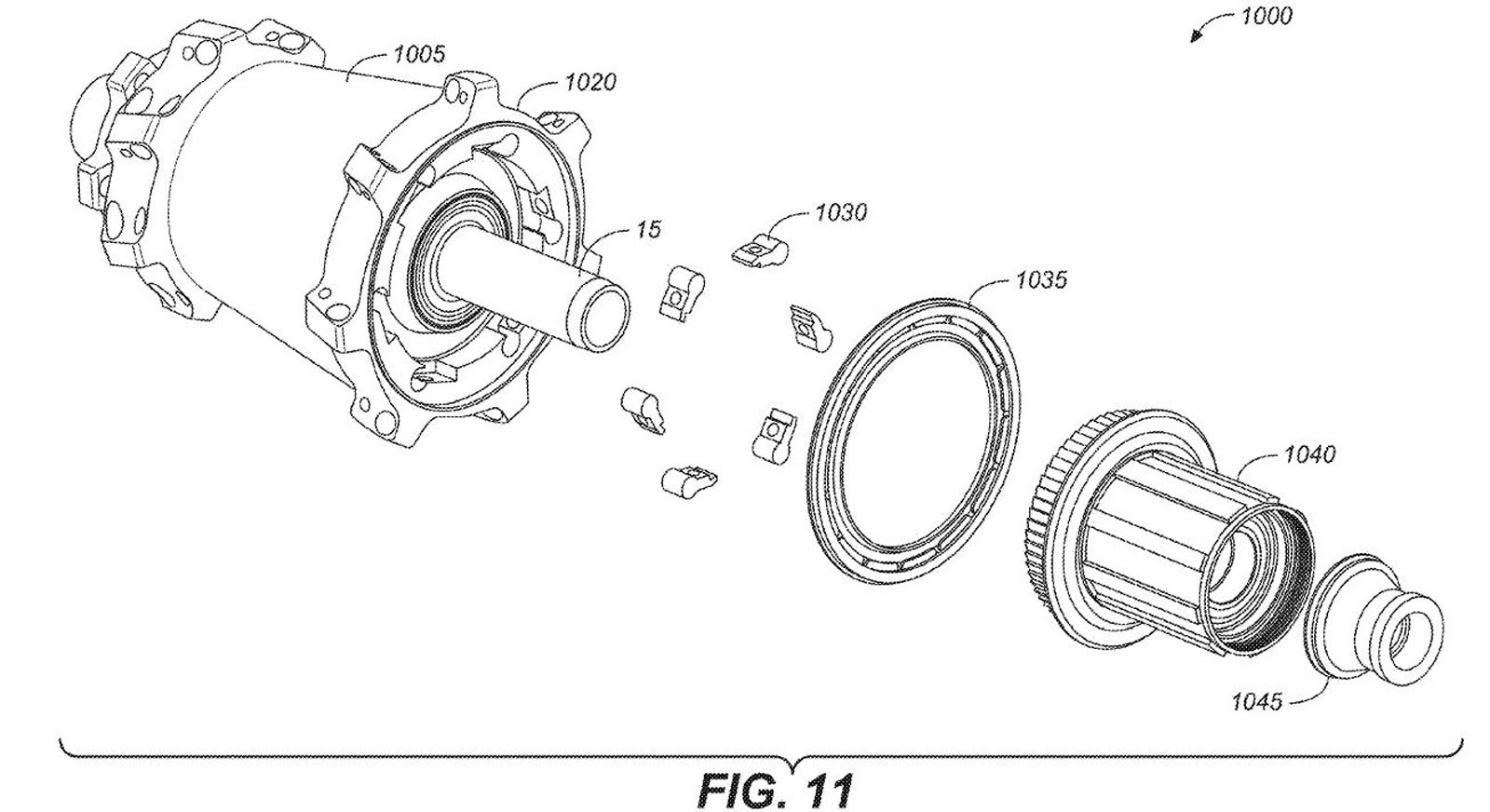
The ‘electronically decoupling’ hub would be configured to disengage its pawls in the event of potential pedal kickback events, in order to prevent the rider from experiencing undesirable rearward rotation of the cranks. Read: Every downhill with the perfect unrestrictive suspension movement of Aaron Gwin winning a Leogang DH World Cup without a chain.
Similarly, the clutch of the rear derailleur would be configured to electronically disengage as the chainline went into extension during large compression events – its disengagement would allow the cage to swing forwards freely, providing little to no resistance to the movement of the rear suspension. So basically, hub & derailleur never restricting suspension movement.
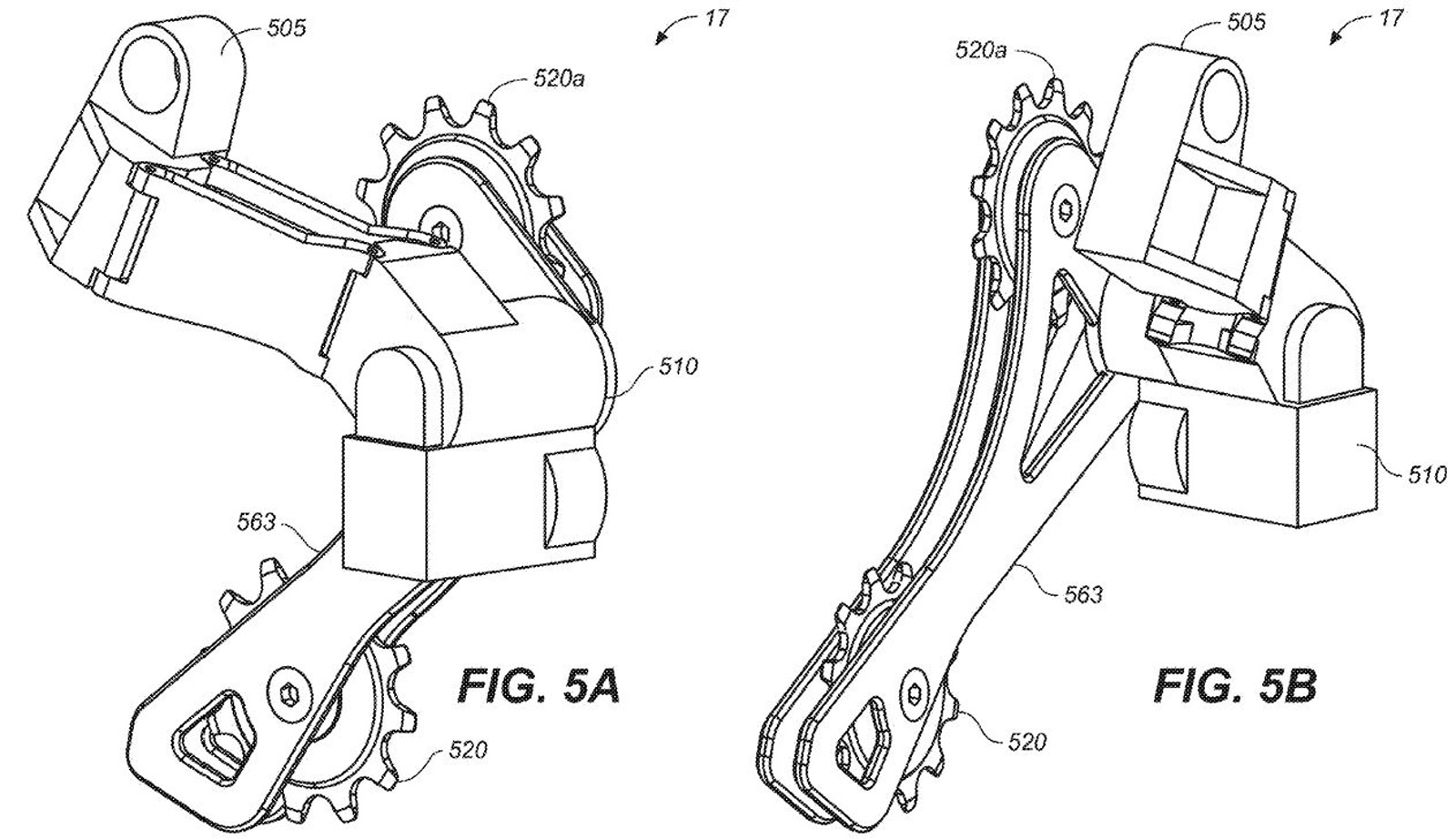
The Fox Factory patent described the use of multiple sensors and a central processing unit to coordinate hub coupling/decoupling events and clutch disengagement/engagement events to basically produce a chainless ride feel for the rider, while still ensuring consistent chain retention.
However, while the Fox Factory patent did a great job of explaining how these two components would work together to give that chainless ride feel, it didn’t go into much detail on the infrastructure requirements for such a setup. Namely, how exactly the hub and derailleur would be wired, or how they would be powered, even.

It doesn’t take a large stretch of the imagination to see how Shimano’s Bracket Assembly could be that missing infrastructure. The Suspension Enhancing Hub and Derailleur Assembly is automatic and electronic, after all, so would therefore require a centrally-housed battery (possibly 24), with a wire running to the motor associated with the derailleur clutch, and another wire running to the motor (possibly through groove 38) operating the engagement state of the hub pawls. And of course, it would also require “a communicator or an informing unit” (possibly part of 26A) for coordination of engagement.
Sure, wireless communication is possible, but wires are sometimes faster and simpler.
It’s not so unrealistic to suggest that Fox may have teamed up with Shimano to create a new derailleur hanger solution for their still-hypothetical drivetrain components.
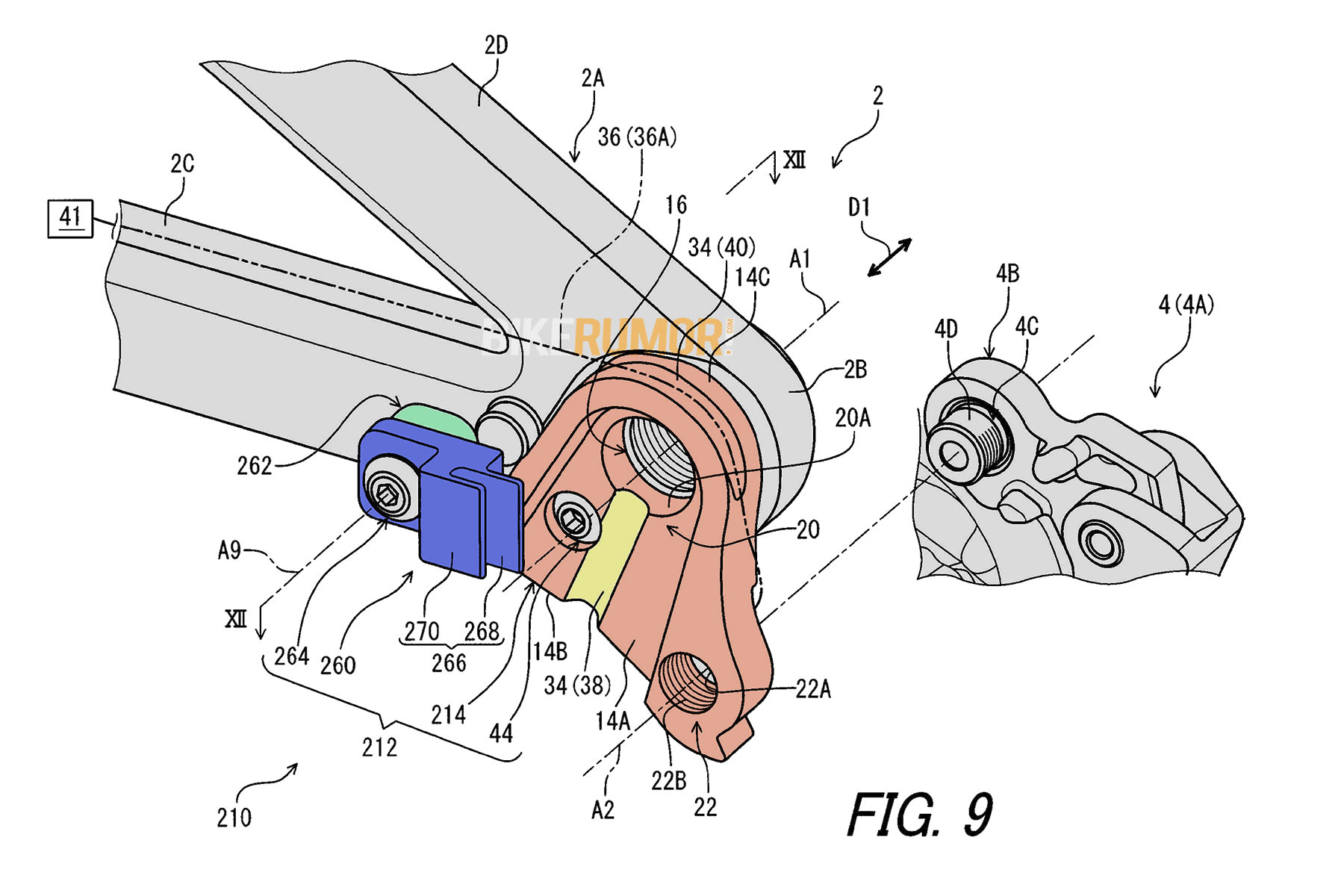
Self-Cleaning and Chain-Stabilizing
There’s more. Shimano’s Bracket Apparatus is also able to mount a “cleaning portion” (266). This essentially comprises a two-pronged structure, bolted to the secondary mounting point of the Bracket Apparatus. Component 270 and 268 are positioned to slot in between sprockets 1 and 2, and sprockets 2 and 3, respectively. Why? To scrape away muck that would otherwise build up here, of course.
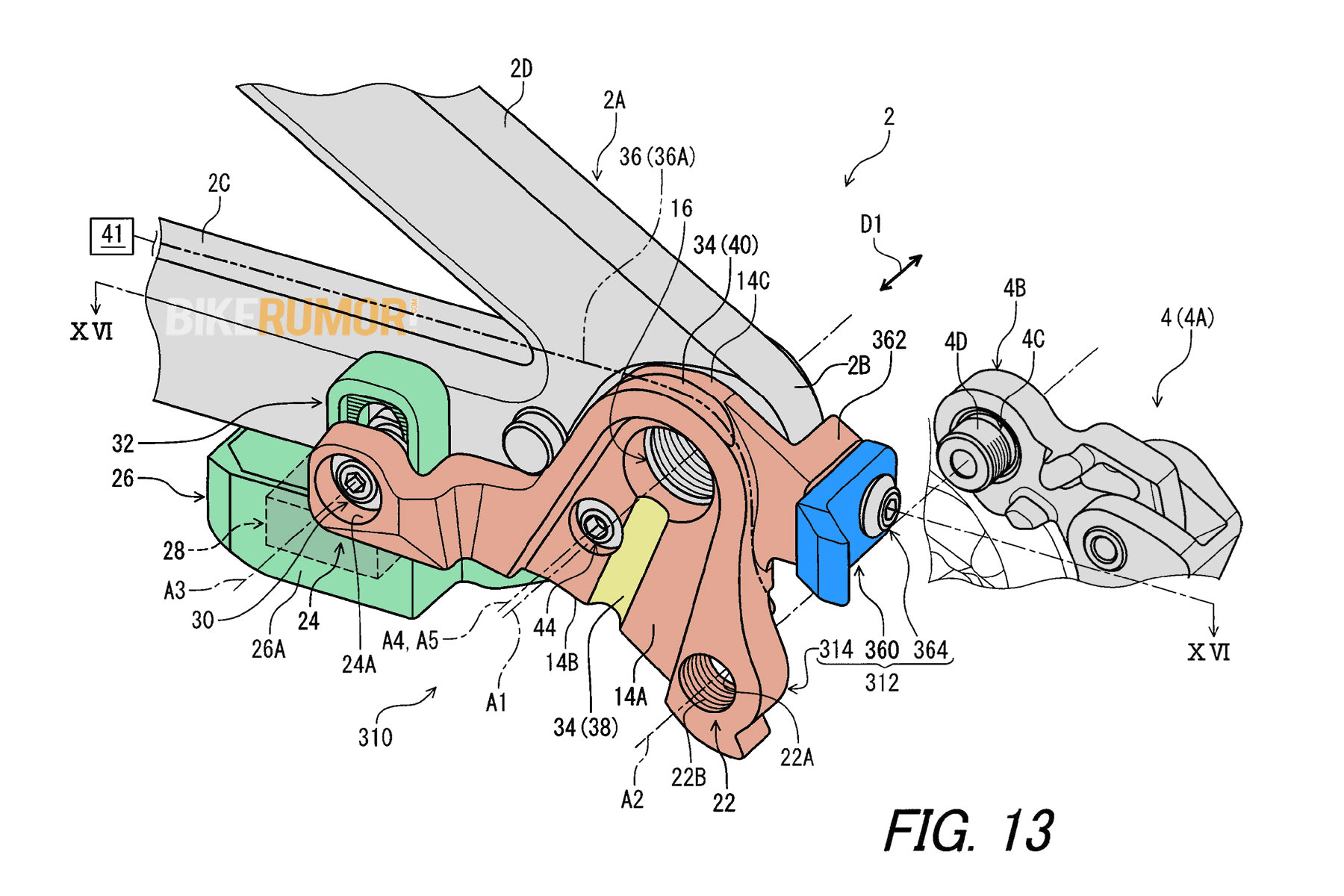
In another embodiment, the Shimano Bracket Apparatus includes a chain stabilization module (360) bolted to the hanger portion such that it is positioned directly behind the dropout. Here, a tab protrudes a short distance toward the cassette, where it could foreseeably prevent the chain from dropping off the smallest sprocket of the cassette into no man’s land.
So which will it be? Will this hanger be the next gravity racing sensation, or maybe STeP(S) up Shimano Cues Di2 commuter style?
Let us know your thoughts in the comments.
The post Shimano Derailleur Hanger Patent Opens Up Many Possibilities with Another New Standard appeared first on Bikerumor.
